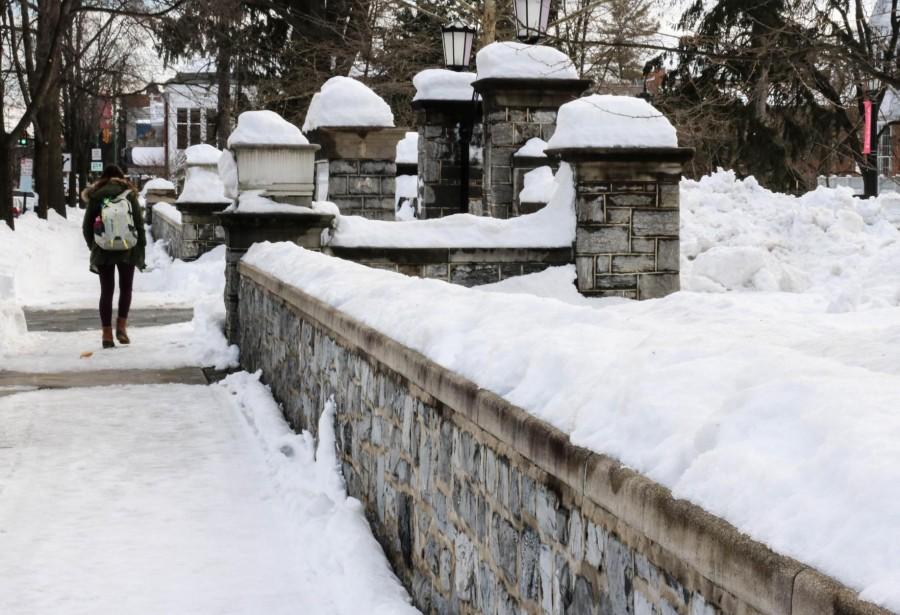Blizzard Delays Start of Classes
Severe weather conditions caused members of the Facilities Management staff to work 12-hour shifts plowing pathways and parking lots across campus.
Super storm Jonas dumped approximately 28.6 inches on Carlisle across Jan. 22 to 24, causing many students to delay their travels back to campus and leading the college to cancel its first day of classes on Monday, Jan. 25.
Ashley Zink, Director of the Compliance and Enterprise Risk Management Department, reported that Dickinson’s Emergency Operations Response Team was planning for the snowstorm throughout the prior week.
“Dining services employees worked 12-18 hours each preparing meals, many Facilities Management staff members worked 12 hour shifts to plow pathways and parking lots across campus and Student Life made the decision to allow students to return to campus early if they requested to do so,” Zink said. To face extreme weather events, Dickinson has access to emergency equipment such as back-up generators, Red Alert and email notification, as well as facilities operations support.
Since shuttles could not make it to Harrisburg safely due to severe weather conditions, the college arranged accommodation in a hotel by the station for incoming students on Saturday night. The shuttle service picked back up after a short delay and continued all week until the last reported student’s arrival on Jan. 30.
Zink added that “the college does not typically cancel classes and has only done so approximately six times in the past forty years.”
Archived Dickinsonian articles reveal major snowstorms leading to cancellation of school in 1983 and in 2003, as well as other impressive snowstorms in 1993, 1994 and 1996. Seniors who have attended the college since 2012 have experienced two ‘super storms,’ including Hurricane Sandy in 2012 and Jonas.
While weather and climate are separate ideas, weather patterns may be able to indicate possible fluctuations in the future due to a changing climate.
“Look at the world and the weather patterns in the past five years: everything has changed,” said Jack Marcus ’17, an attendee of last year’s COP20 climate change talks.
“Seasons are shifting: we’re seeing the max growing seasons shortened, which is bad for the farmers. People on the east coast are feeling the snowstorm, while people along the west coast in California are feeling the effects of a drought,” explained Jackie Geisler ’17, another attendee of last year’s COP20 talks. From the talks, they observed that all scientists present accepted the existence of global climate change but disagreed on its severity.
“Even in a highly technologically advanced society, our routine can come to a grinding halt. This is a useful lesson to us, in that it makes us analyze our capacity, knowledge and infrastructure to help better prepare ourselves for extreme weather situations,” said Neal Leary, the director of the college’s Center for Sustainability.
“It is a bit tenuous to make a connection between a massive weather event and climate change,” suggested Leary. “People will be skeptical that it’s directly connected, because the weather itself is extremely variable. However, we can expect that storms will be stronger than in the past due to moisture in the air.”






